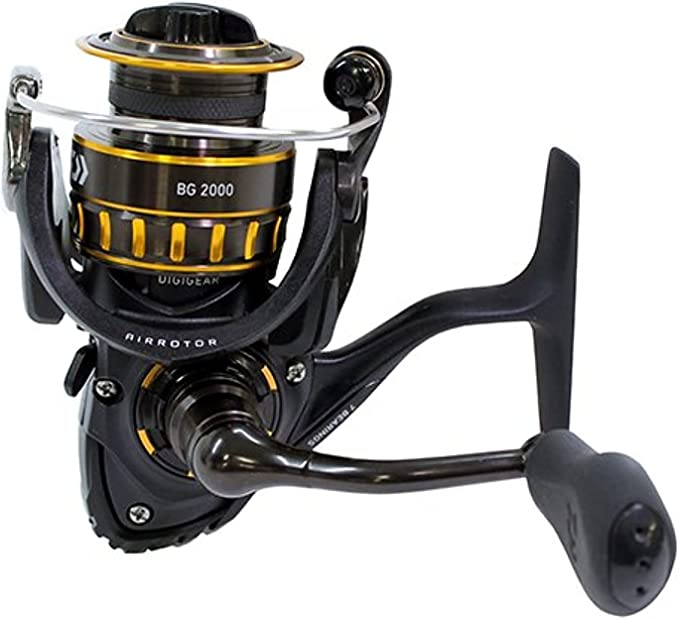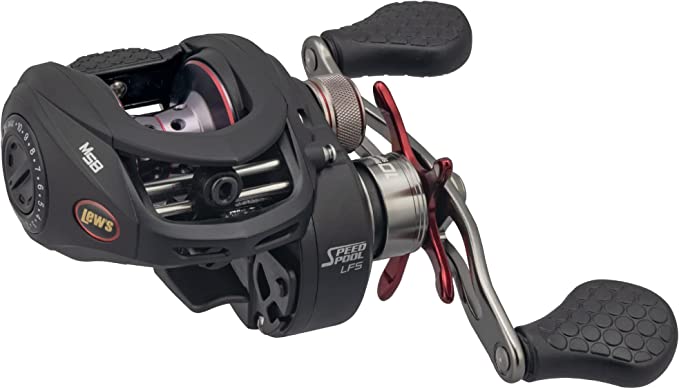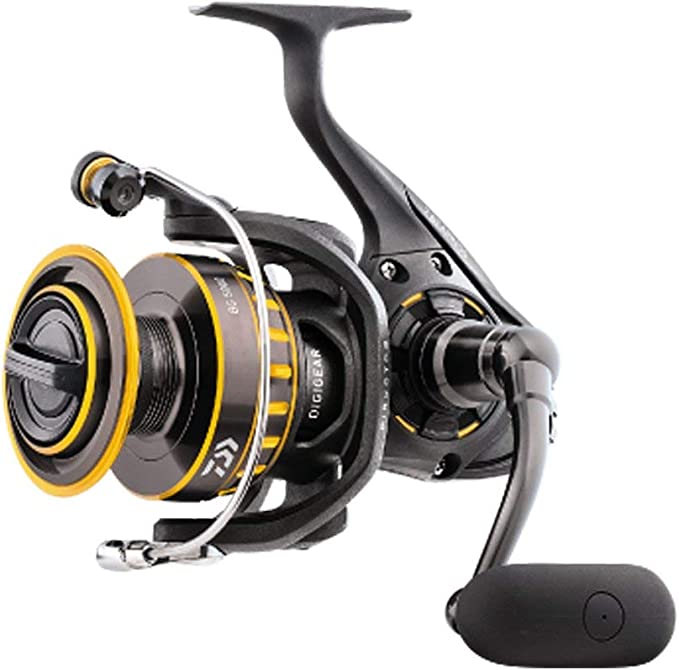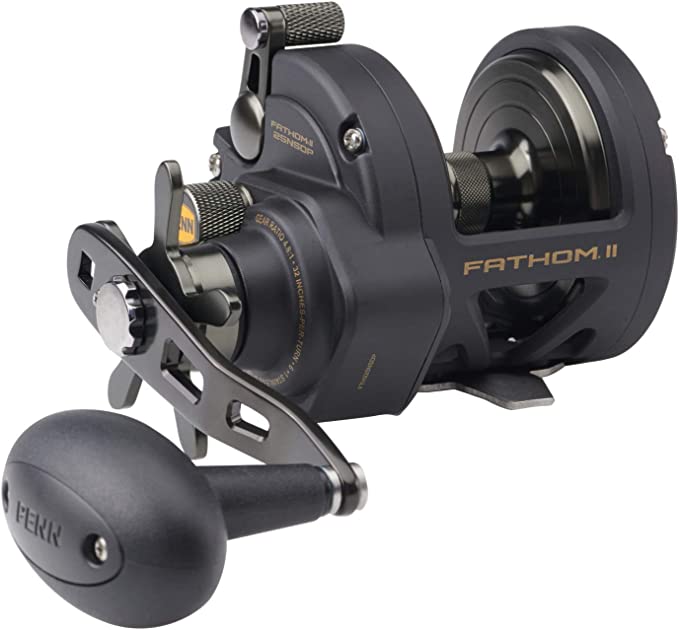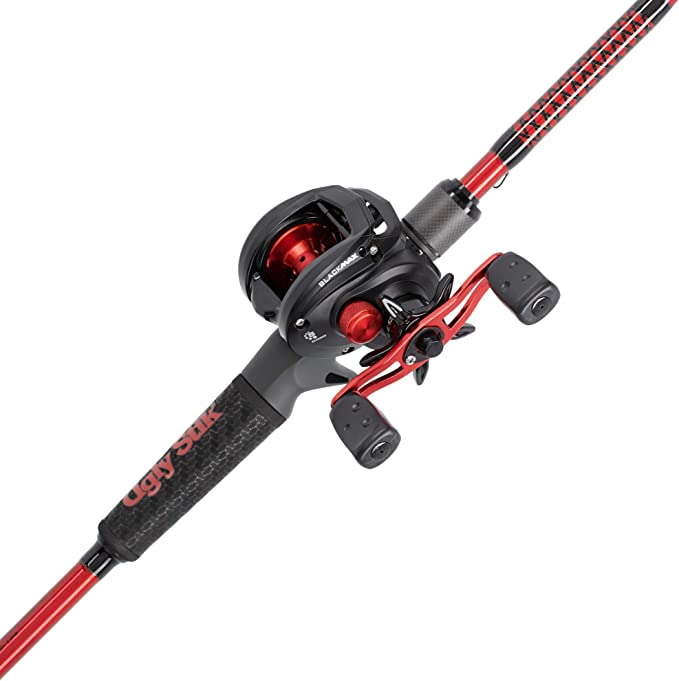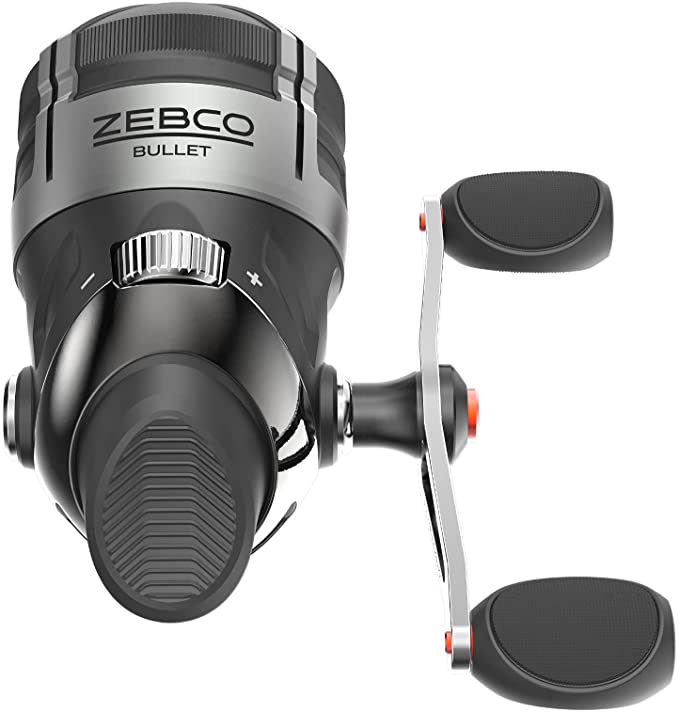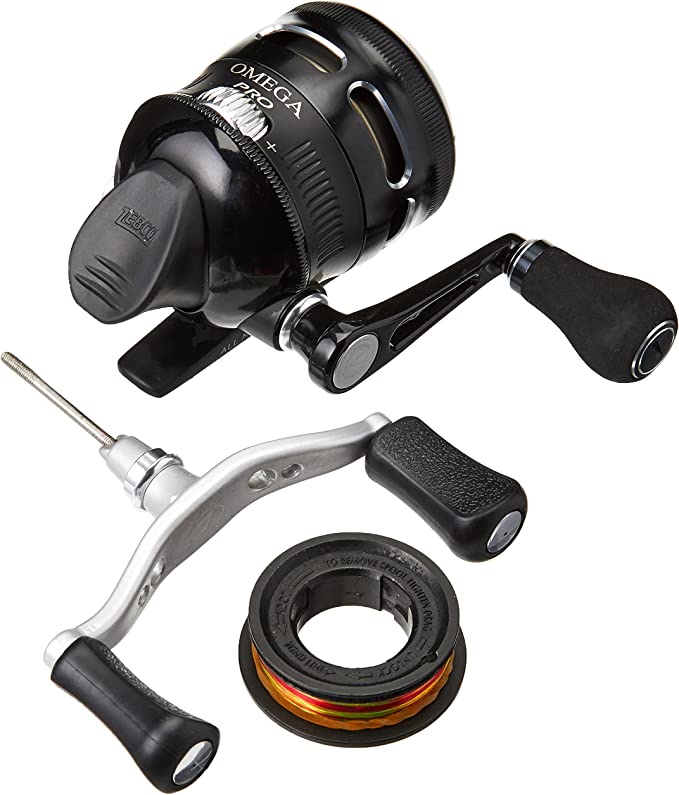Inside the Machine: The Physics and Material Science of the Abu Garcia ZATA-HS Baitcaster
Update on July 31, 2025, 5:51 p.m.
Every angler who has wielded a baitcaster knows the feeling—that critical moment suspended between hope and dread. A flick of the wrist sends a lure sailing towards a distant target, a perfect arc against the sky. Or, in a split second, it devolves into a tangled, infuriating mess known as a backlash or “bird’s nest.” This isn’t a failure of skill as much as it is a collision with the laws of physics. At its core, a backlash is a simple problem of mismatched speeds: the reel’s spool, driven by inertia, is spinning faster than the fishing line is flying through the air. The Abu Garcia ZATA-HS is a masterful case study in modern engineering, a machine designed not to defy physics, but to elegantly control it. Let’s pull back the sideplate and explore the science that turns chaos into control.

The Brains of the Operation: Taming Inertia
The primary culprit in any backlash is inertia—the tendency of the spool to maintain its state of motion. The real challenge is managing its deceleration. This is the job of the reel’s “brain,” its braking system. The ZATA-HS features an “Infini brake system,” described as offering near-limitless adjustability. While the proprietary specifics are guarded, the underlying principles are universal in high-performance reels. These systems typically work in one of two ways: magnetism or centrifugal force.
A magnetic brake, for instance, uses the principle of eddy currents. As the conductive metal spool spins within a magnetic field, it induces small, circular electrical currents—eddy currents—within the spool itself. These currents generate their own opposing magnetic field, creating a smooth, non-contact braking force that increases with spool speed. A centrifugal system uses small weights that sling outwards as the spool spins, physically contacting a brake ring to slow it down. The “Infini” system’s promise of “limitless adjustability” means an angler can precisely dial in this braking force to counteract the lure’s weight and wind resistance, creating a perfect, symbiotic relationship between the spool and the line as it flies. It transforms the cast from a gamble into a calculated, repeatable action.

The Engine Room: A Study in Efficiency and Motion
Once the cast is made, the reel’s character is defined by how it feels on the retrieve. Words like “smooth” and “solid” are not marketing fluff; they are the tangible results of mastering friction. This is the domain of tribology, the science of friction, wear, and lubrication, and it lives in the reel’s engine room: its bearings and gears.
The ZATA-HS’s specification of “10 stainless steel ball bearings + 1 roller bearing” is a direct statement of its anti-friction strategy. The fundamental principle at play is the vast difference between sliding friction and rolling friction. Imagine pushing a heavy box across the floor (sliding) versus pulling it on a wheeled dolly (rolling). The bearings place tiny, hardened steel balls between the fast-moving spool shafts and the stationary frame, converting high-resistance sliding contact into low-resistance rolling motion. This efficiency means more of your energy goes into retrieving the line, resulting in that effortless, connected feel. The choice of stainless steel is a deliberate material science decision, prized for its hardness and, thanks to its chromium content, its ability to form a passive, rust-resistant layer—critical for a tool exposed to the elements.
The heart of this engine room is the Duragear brass gear. Gears transmit the power from the handle to the spool. Brass, an alloy of copper and zinc, is an excellent choice for this high-stress application. It is harder and more durable than aluminum but has a certain “give” and lubricity that makes it incredibly wear-resistant when meshing with other gears, ensuring a long and reliable service life.
The Ultimate Safety Net: The Carbon Matrix Drag
A reel’s purpose culminates in the moment a fish is on the line. Here, a new force comes into play: the frantic, powerful runs of a hooked fish. A reel’s drag system acts as a safety net, a sophisticated clutch designed to apply consistent pressure and prevent the line from snapping. The ZATA-HS employs a Carbon Matrix drag system, and the choice of carbon fiber is key to its performance.
Think of the drag as a car’s brake discs. When a fish pulls, a series of carbon fiber and metal washers are compressed, creating immense friction. Unlike other materials, carbon fiber is exceptionally stable at high temperatures. As a fish makes a long, blistering run, the drag washers heat up. Carbon fiber’s friction coefficient remains remarkably consistent whether it’s cold or hot, preventing the “jerky” or “sticky” feeling of inferior systems. It delivers smooth, predictable pressure from the moment the fish starts pulling, allowing an angler to confidently fight the fish without fear of equipment failure.

The Chassis: A Foundation of Strength and Sensitivity
All this intricate machinery is housed within a graphite frame and sideplates. This is a deliberate choice to optimize the engineering holy grail: the strength-to-weight ratio. At a mere 9.52 ounces, the ZATA-HS is remarkably light. This isn’t just for comfort; a lighter reel reduces angler fatigue over thousands of casts in a day and, crucially, increases sensitivity. The rigid graphite chassis acts like a tuning fork, transmitting the subtle vibrations of the lure swimming or a bass inhaling the bait directly to the angler’s hand.
And sometimes, form and function align in a way that captures the imagination. For many users, the matte military green finish with red accents has earned it the nickname of a certain famous sci-fi bounty hunter’s armor. It’s a testament to a design that feels both ruggedly purposeful and aesthetically cool.
Ultimately, the Abu Garcia ZATA-HS is a symphony of applied science. It’s a machine where the laws of inertia are managed by magnetic fields, where friction is conquered by the simple perfection of a rolling ball, and where the raw power of a fish is tamed by the molecular stability of carbon fiber. To understand this is to understand more than just a single piece of equipment. It is to appreciate the invisible engineering that elevates the simple act of fishing into a seamless partnership between the angler, the tool, and the laws of nature.
